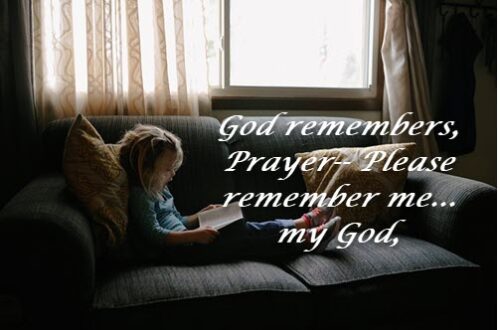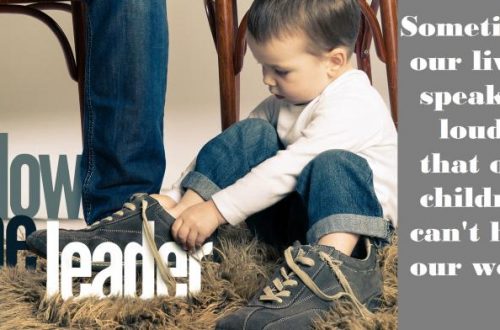Walking in the Shadow of the Cross and the Light of the Resurrection with Children
Easter is the most important celebration of our faith; it is the very essence of what makes us Christian. Therefore, it is important that we find meaningful ways to celebrate its significance with our children in order to build a deeper level of understanding as they mature in their walk with the Lord.
Easter is the most important celebration of our faith; it is the very essence of what makes us Christian. Therefore, it is important that we find meaningful ways to celebrate its significance with our children in order to build a deeper level of understanding as they mature in their walk with the Lord.
When my children were young in the early 80s we began making “Holy Week Baskets” at home to celebrate Easter. We began to gather items that represented events from Holy Week. As we added each item, we would talk about it, look up the scriptures, and weave them together into the rich tapestry of Holy Week. I noticed how my children’s interest and knowledge grew and deepened as they became engaged in this interactive learning process each year.
As head of school, we began to make Holy Week Baskets at school. Later as minister to children, we made them at church. My children became my “Happy Helpers,” and during the month before Holy Week, we would gather the items, organize them, sort jelly beans by colors for the Jelly Bean Prayer, and prepare items so hundreds of children could create Holy Week Baskets. Sundays would find us taking around wagons over-flowing with items for little fingers to touch, and later teach others about the significance of what happened each day from Palm Sunday to Easter Sunday.
Building Traditions
It became our Easter tradition…as a family…in our school…and in our church. I saw children, parents, and teachers get excited each year and ask, “Are we going to make Holy Week Baskets this year?”
As time went on, I began to teach about this tradition at school and church conferences. I wrote about this and the importance of establishing traditions in my book Cherishing and Challenging Your Children— over 20 years ago! I am still doing them each Easter, now with my grandchildren, and also at church where I teach Sunday school.
Letting Older Children Be Helpers
When children get to about age nine or ten, the enthusiasm they had in previous years may turn to “Do I have to make a Holy Week Basket again this year?” Before you let this make you feel like a failure as a parent or teacher, realize that this is part of growing up. This is an opportunity to turn it into a positive! Respond with “I would love for you to be my helper. You are so good at creating and explaining the importance of the Holy Week Baskets. I need you to show the ‘little ones’ how to make them and what each item represents.” They love “being in charge” and this gets you through their transition time. Plus, there is no better way to learn anything than to teach it! Your children’s understanding continues to grow as the Holy Spirit works in their hearts through their words and actions when they help teach the little ones. Everyone is blessed.
Baskets Become Evangelistic Tools
The next question that might come up if you do them as a tradition in your family, church, or school is, “I already have one from last year. Why am I making another one?” Answer: “I am so glad you asked that question. This one can be for you to give to someone who doesn’t know Jesus. When you give it to them, you can tell them the story of Easter.” Thus, your Holy Week Basket becomes an excellent evangelism tool!
Resurrection Baskets to Share the Gospel
Holy Week Baskets can also be called “Resurrection Baskets,” as we have called them for some of the years. They make lovely centerpieces for you to give to Grandparents and other people in your family, especially those who may not know the Lord. It’s a joy for children to have the opportunity to explain each item in the basket, much to the amazement of adults who have no idea what the Resurrection is all about. Some may assume Easter is just about bunnies. Those who have heard about Jesus might not understand the depth and glory of the Resurrection story. There is no better way to share the Gospel than through this Holy Week-Resurrection Basket!
How to Make Your Basket
If you are making them at home, you start with an empty Easter basket. If you are making them for your church or school, I suggest going to the grocery store and ask for strawberry containers. They are happy to donate them to you. I use pipe cleaners for handles. It helps with limited budgets.
Now, what goes in the baskets: I suggest that you vary them depending upon the ages of the children. For example, you may not want to put in a nail for younger children. You can add more items each year as the children get older and have the developmental ability to understand spiritual concepts on a deeper level.
Teaching About Each Item
As you take each item out, teach the children about the significance of each one. Look up the scriptures together as a family or in your classroom.
I provide little booklet to go in each basket. You may copy and fold it to put in the baskets to guide the children in their understanding of the significance of the Holy Week-Resurrection Basket. It also provides scripture references for each item. It is also a download from my April newsletter – or you may contact me to receive a copy.
The Resurrection Eggs came out about ten years after I had been making these Holy Week-Resurrection Baskets. They are very similar in concept and can reinforce what you are doing by using the eggs with each item.
The items may include:
• palm branch to represent Palm Sunday
• 1" piece of towel: washing of feet; symbol of service
• unleavened bread and communion cup: to represent the Passover/ Last Supper
• silver coins to represent Judas’s betrayal (I use play money from the Dollar Store)
• cross: made with popsicle sticks
• nail: (only with older children please)
• rock: placed over the tomb where Jesus was buried
• scroll with a mini-gospel such as 1 Corinthians 15: 3-4, or John 3:16
(type the verse, copy, cut into strips, glue popsicle sticks on either side, roll each side to the center to make a scroll)
• 2" black cloth: to represent the world turning dark when Jesus was on the cross
• 2" purple cloth: temple curtain torn in half when Jesus died
• 2" linen cloth: shroud to wrap Jesus’ body for the tomb
• grass: New life when you believe in Jesus
• cotton ball: Jesus will return through the clouds to gather all those who believe in Him (share the Gospel!)
• Jelly Bean Prayer (I put the jelly beans in a baggie with a copy of the prayer) The Jelly Bean Prayer can be downloaded from my newsletter, which you can sign up for on www.jodycapehart.com. or contact me for a copy.
As children mature, starting in about 3rd grade, I encourage them to read one of the gospel accounts of Holy Week, starting with Palm Sunday and ending with Jesus’ resurrection, each year. For example:
3rd Grade: Matthew
4th Grade: Mark
5th Grade: Luke
6th Grade: John
If you have my book, Cherishing and Challenging Children, you can find these ideas and more on pages 144-45, first published in 1990 with Scripture Press.
Activities to challenge older children:
1.Create a timeline of all the items in their Holy Week basket with corresponding scriptures from each of the gospels.
2.Add items to represent each day of Holy Week. For example, what did Jesus do each day during that week? We tend to know what happened on Sunday, Thursday, Friday, and Sunday. But often the extraordinary teachings of Jesus that occurred on Monday and Tuesday get eclipsed by the profound events of the rest of the week. What was happening on Wednesday? Let your children be “Bible Detectives” and find out! Have the children put items in their baskets as symbols from those teachings.
Parents and teachers, may I encourage you to take time to find activities that teach the profound message of Easter and ones you can build upon each year as your children grow older. Another one I use in my teaching with children is “A Walk to the Cross”. Focus on the Family has an excellent family magazine called “Thriving Family” which provides wonderful Easter Story crafts and activities to do as a family.
These meaningful memories become beautiful threads in the tapestry of our children's spiritual hearts. These windows of opportunities are worth every minute of the investment of our time and energy, as they reap rich dividends… for eternity.



One Comment
SonShine
Holy Week Baskets
What a marvelous opportunity. Thanks Jody for sharing this idea for families and SS teachers alike.
GEA